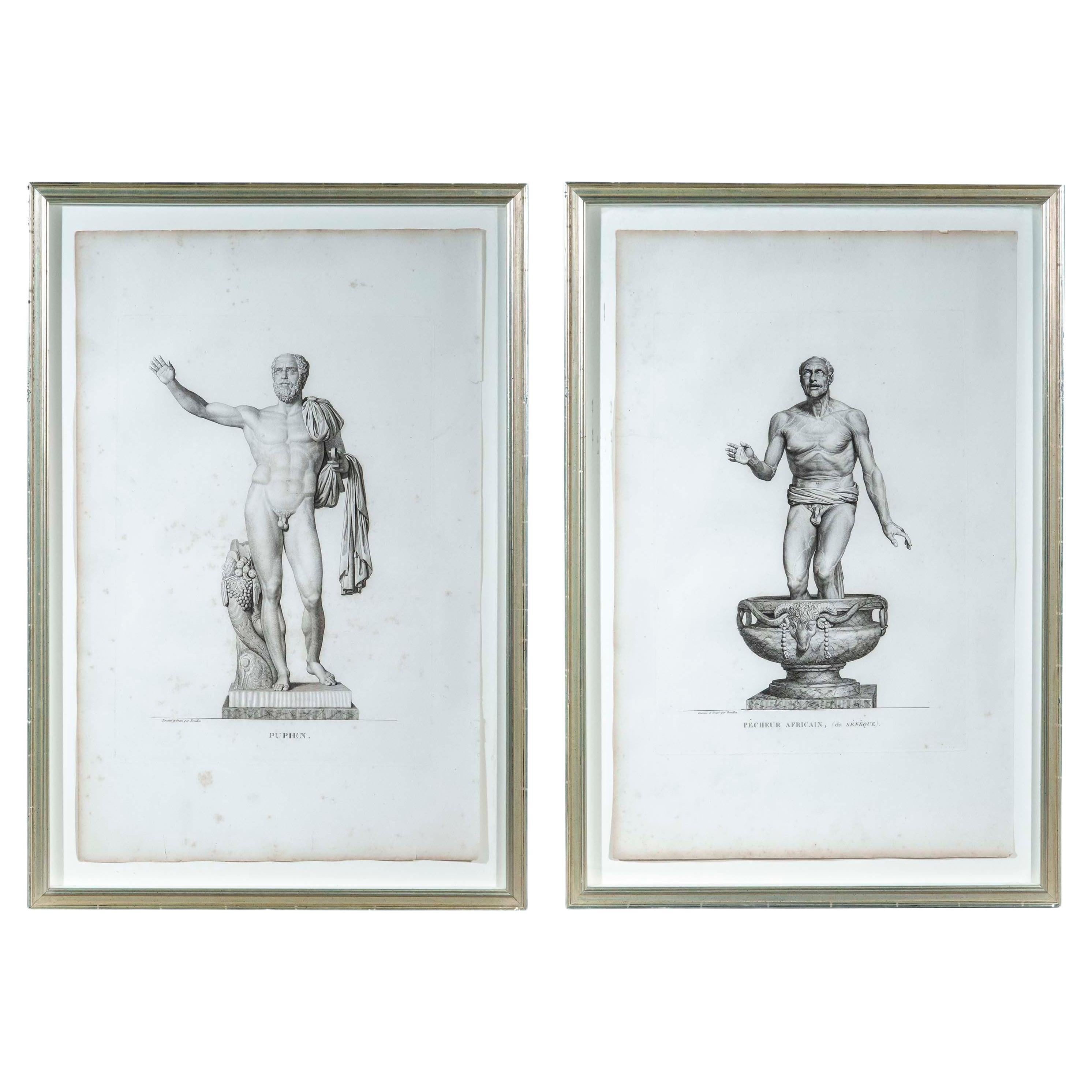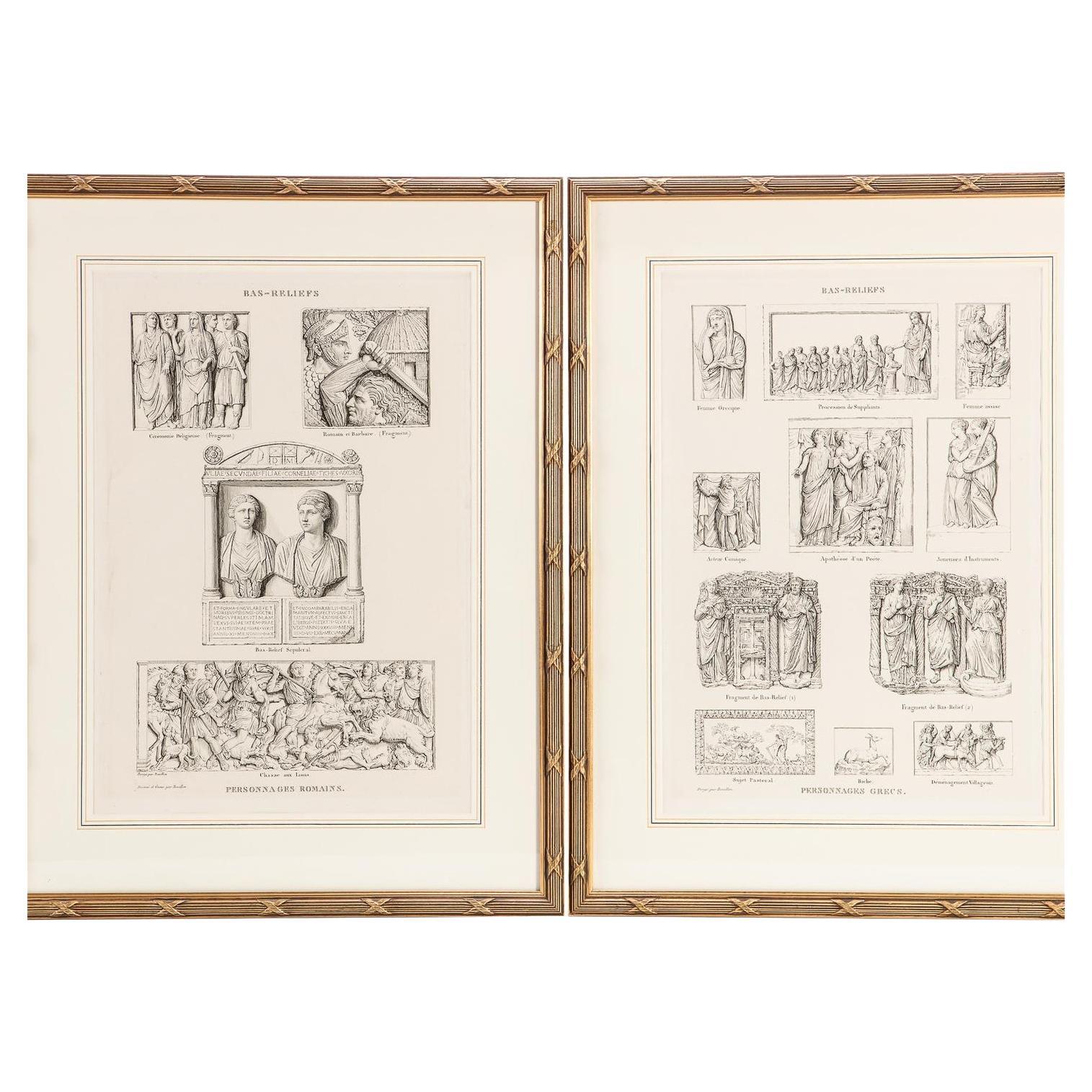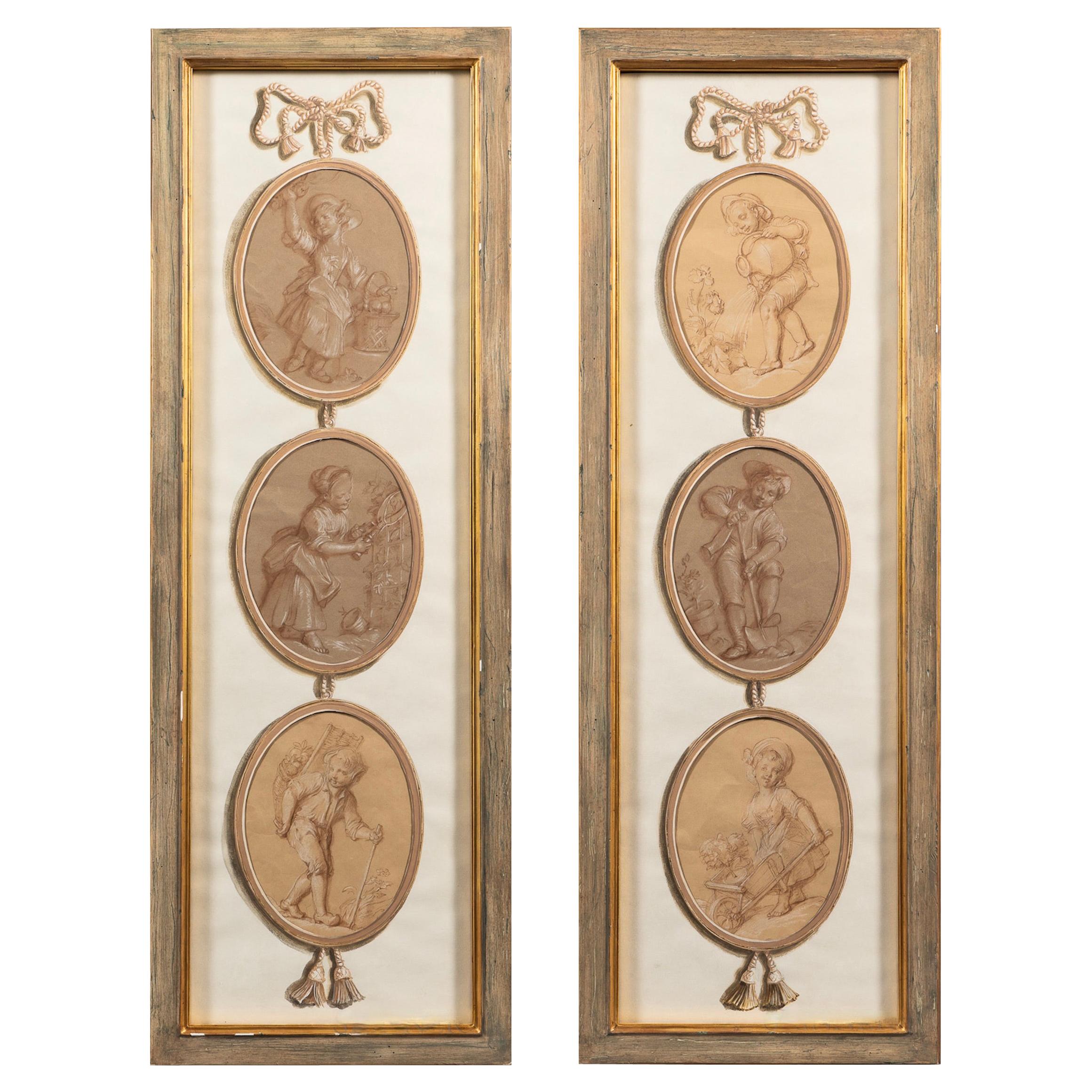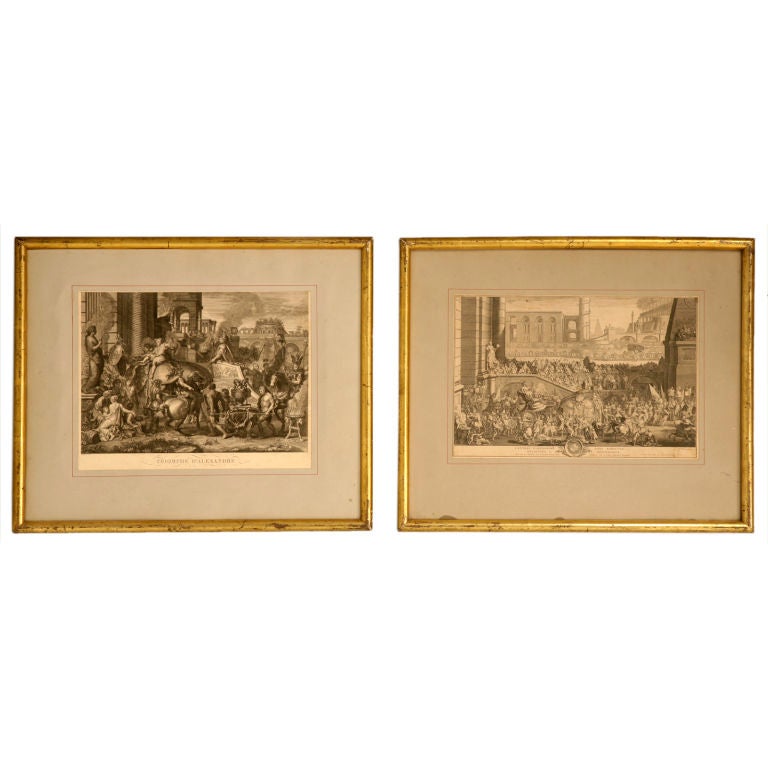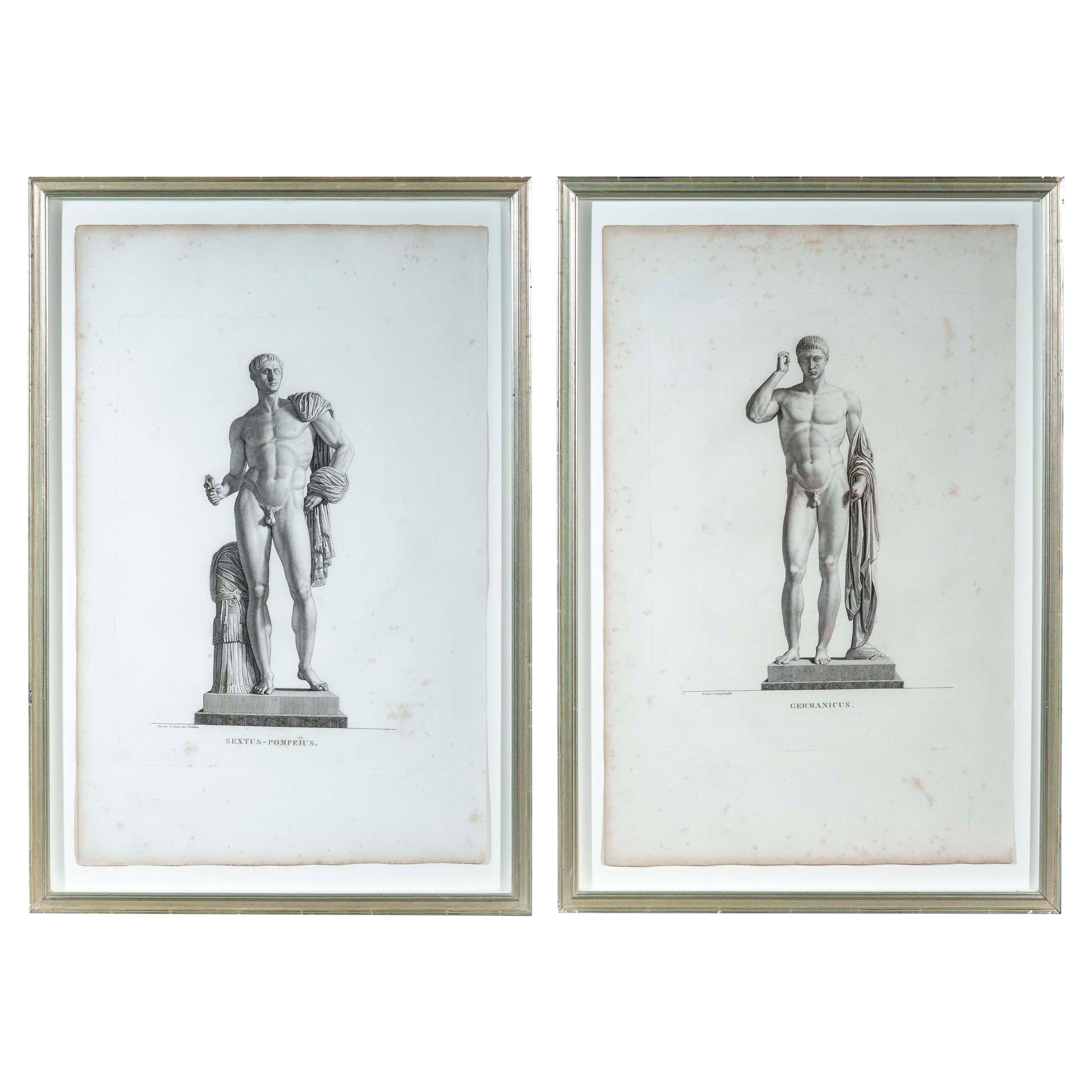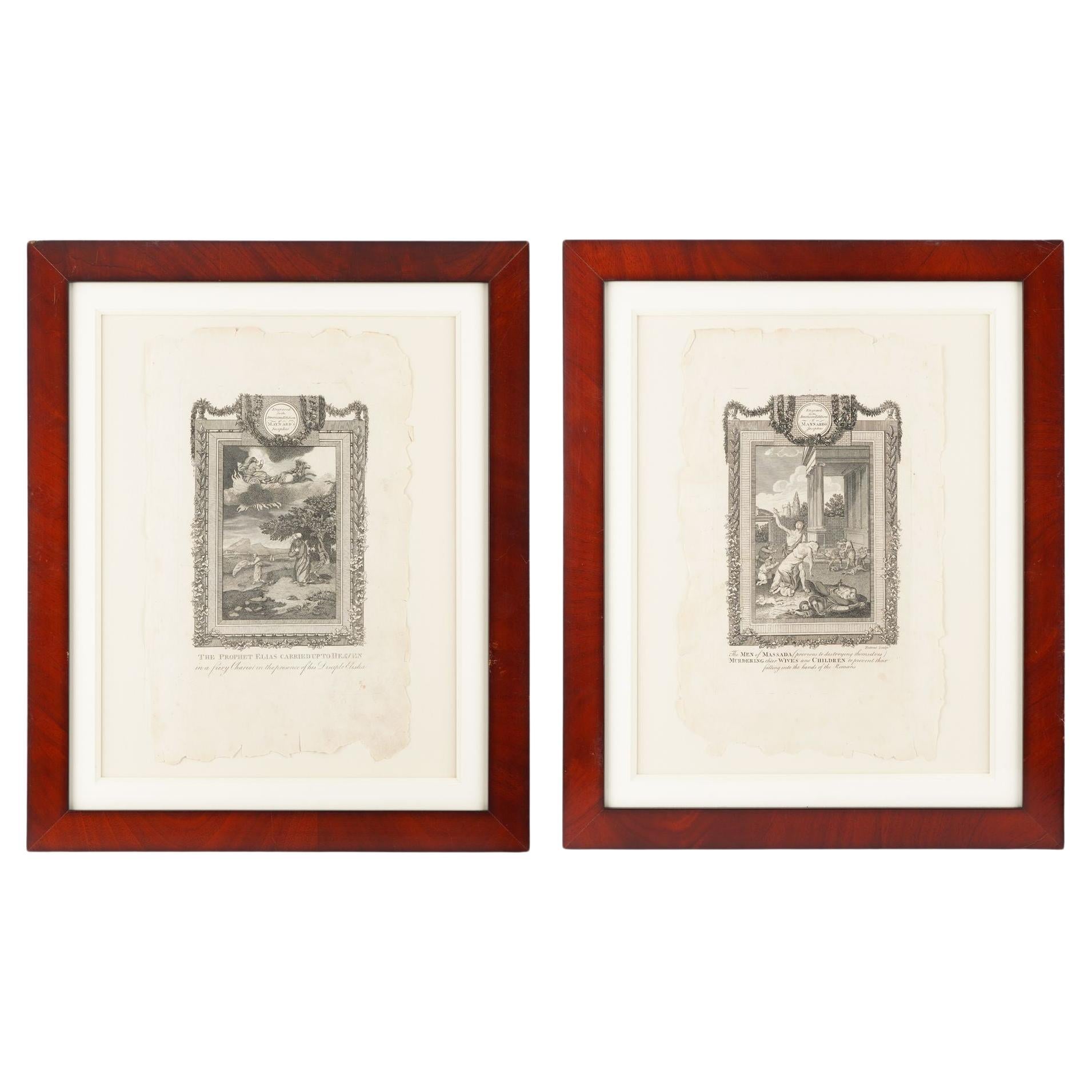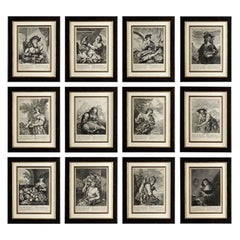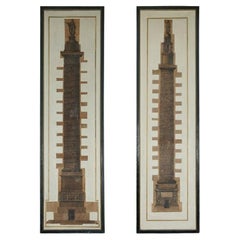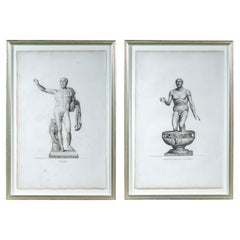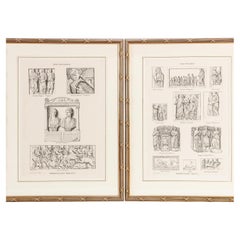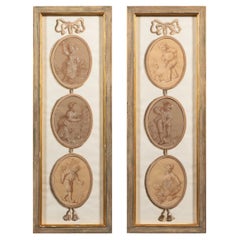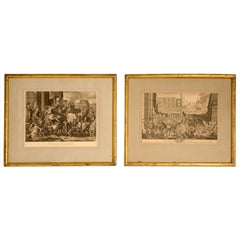Items Similar to Pair of Bernard De Montfaucon Paris 1719 L'antiquite Original Grand Tour Prints
Want more images or videos?
Request additional images or videos from the seller
1 of 21
Pair of Bernard De Montfaucon Paris 1719 L'antiquite Original Grand Tour Prints
$822.10per set
£600per set
€699.87per set
CA$1,126.07per set
A$1,252.44per set
CHF 653.98per set
MX$15,240.83per set
NOK 8,352.37per set
SEK 7,833.05per set
DKK 5,223.38per set
Shipping
Retrieving quote...The 1stDibs Promise:
Authenticity Guarantee,
Money-Back Guarantee,
24-Hour Cancellation
About the Item
We are delighted to offer for sale this lovely pair of original copper plate prints dating to 1719 by Bernard De Montfauucon of Paris.
Dom Bernard de Montfaucon, O.S.B. (French: [d? m?~fok?~]; 13 January 1655 – 21 December 1741) was a French Benedictine monk of the Congregation of Saint Maur. He was an astute scholar who founded the discipline of palaeography, as well as being an editor of works of the Fathers of the Church. He is regarded as one of the founders of the modern discipline of archaeology
Montfaucon was born on 13 January 1655 in the Castle of Soulatgé, a small village in the southern town of Corbières, then in the ancient Province of Languedoc, now in the modern Department of Aude. Other sources claimed his birth date is in 16 January, the most accepted date. After one year he was moved to the Castle of Roquetaillade, residence of his family. When he was seven, he was sent to Limoux, to the college run by the Fathers of Christian Doctrine
Montfaucon served in the French army as a volunteer and participated in the Franco-Dutch War of 1673. He was a captain of grenadiers and made two campaigns under the command of Marshall Turenne, participated in the Battle of Herbsthausen and fell ill in Saverne in Alsace. Because of his infectious illness he made a vow to Our Lady of Marceille to give one hundred livres to her sanctuary in Limoux and to become a monk, if he was able to return to his country as a result of her intervention.
After the death of Montfaucon's father at the Château de Roquetaillade, in 1675 he entered the novitiate of the Benedictine monastery of Bream in Toulouse. There he learned several ancient languages: Greek, Hebrew, Chaldean, Syriac, and Coptic.
In 1687 Montfaucon was called to the Abbey of Saint-Germain-des-Prés and he started to work on an edition of the works of the Greek Church Fathers. In 1705 Montfaucon examined and described the manuscripts of the Fonds Coislin, in Bibliotheca Coisliniana (Paris, 1705). In 1708 in Palaeographia Graeca Montfaucon became the first to use the term "palaeography".
The work illustrates the entire history of Greek writing. It contains Montfaucon's discussions of variations in Greek letter forms, the use of abbreviations in Greek manuscripts, and the process of deciphering archaic writing. It was Montfaucon's special interest. In this work he often cited Greek manuscripts in texts of Athanasius of Alexandria, Origen, and John Chrysostom.
The book dealt so comprehensively with the handwriting and other characteristics of Greek manuscripts that it remained the leading authority on the subject for almost two centuries.
Montfaucon published 15 volumes of L'antiquité expliquée et représentée en figures between 1719 and 1724. An English translation of this work was published in 1721–25 under the title Antiquity Explained and Represented in Diagrams. The work contained copperplate folio engravings of classical antiquities. It included a depiction of the "Barberini Vase", more commonly known as the "Portland Vase". This book is published in English under the title Antiquities.
The materials used in this work were taken from the manuscripts deposited in French libraries. It contains many illustrative facsimiles, though they are engraved in a rather coarse way.
In 1719, Montfaucon was named by Philippe II, Duke of Orléans to the Académie des Inscriptions et Belles-Lettres. In 1719 after the death of the Jesuit priest, Michel Le Tellier (1643-1719), confessor to the late King Louis XIV, Bernard de Montfaucon then became confessor to the young King Louis XV. Montfaucon died on 21 December 1741 at the Abbey of Saint-Germain-des-Prés, where he was buried
Dimensions
Height:- 50cm
Width:- 33.5cm
Depth:- 2.5cm
Please note all measurements are taken at the widest point.
This item is available for collection from our Pulborough warehouses.
CONDITION
Please view the very detailed pictures as they form part of the description pertaining to the condition.
Please note vintage period and original items such as leather seating will always have natural patina in the form of creasing and wear, we recommend annual waxing to ensure no moisture is lost, also hand dyed leather is not recommended to sit in direct sunlight for prolonged periods of time as it will dry out and fade.
- Creator:Bernard de Montfaucaon (Artist)
- Dimensions:Height: 19.69 in (50 cm)Width: 13.19 in (33.5 cm)Depth: 0.99 in (2.5 cm)
- Sold As:Set of 2
- Style:Grand Tour (Of the Period)
- Materials and Techniques:
- Place of Origin:
- Period:1710-1719
- Date of Manufacture:1719
- Condition:Wear consistent with age and use. Minor fading.
- Seller Location:West Sussex, GB
- Reference Number:1stDibs: LU2823330682162
About the Seller
4.7
Platinum Seller
Premium sellers with a 4.7+ rating and 24-hour response times
Established in 2012
1stDibs seller since 2017
1,995 sales on 1stDibs
Typical response time: <1 hour
- ShippingRetrieving quote...Shipping from: West Sussex, United Kingdom
- Return Policy
Authenticity Guarantee
In the unlikely event there’s an issue with an item’s authenticity, contact us within 1 year for a full refund. DetailsMoney-Back Guarantee
If your item is not as described, is damaged in transit, or does not arrive, contact us within 7 days for a full refund. Details24-Hour Cancellation
You have a 24-hour grace period in which to reconsider your purchase, with no questions asked.Vetted Professional Sellers
Our world-class sellers must adhere to strict standards for service and quality, maintaining the integrity of our listings.Price-Match Guarantee
If you find that a seller listed the same item for a lower price elsewhere, we’ll match it.Trusted Global Delivery
Our best-in-class carrier network provides specialized shipping options worldwide, including custom delivery.More From This Seller
View AllPair of Huge Original Circa 1660 Pierre Mignard '1612-1695' Copper Plate Prints
By Pierre Mignard
Located in West Sussex, Pulborough
We are delighted to offer this exquisite pair of extra large Burr Satinwood framed copper plate prints dating to circa 1660 by the genius that was Pierre Mignard...
Category
Antique 1660s English Charles II Decorative Art
Materials
Paper
$2,877 Sale Price / set
30% Off
ORIGiNAL 1643 THE TWELVE MONTHS OF THE YEAR AFTER JOACHIM VON SANDART THE ELDER
Located in West Sussex, Pulborough
Royal House Antiques
Royal House Antiques is delighted to offer for sale this super rare and highly collectable suite of twelve original Copper plate engravings dating to 1643 by Ioachimus Sandrart after the original by Joachim Von Sandrart the Elder depicting the months of the year
These are a suite that will never come up for sale again, dating to 1643 they are 381 years old, the copper engraving print outlines clearly visible, each piece signed to the bottom left Ioachimus Sandart Pinxit and to the bottom right what looks like I Suijderhoef jculjit
These are a highly coveted and important suite of mid 17th century prints, they wouldn’t look out of place in the finest library or museums
The condition is perfect, they are mounted with full margins, on museum board with golf leaf slips and hand made 22ct gold leaf side edges
Dimensions each
Height:- 53.5cm
Width:- 43.5cm
Depth:- 2cm
Please note all measurements are taken at the widest point, if you would like any additional or specific measurements please ask
Joachim von Sandrart (12 May 1606 – 14 October 1688) was a German Baroque art-historian and painter, active in Amsterdam during the Dutch Golden Age. He is most significant for his collection of biographies of Dutch and German artists the Teutsche Academie,[1] published between 1675 and 1680.
Sandrart was born in Frankfurt am Main, but the family originated from Mons.[2][3] According to his dictionary of art called the Teutsche Academie, he learned to read and write from the son of Theodor de Bry, Johann Theodoor de Brie and his associate Matthäus Merian, but at age 15 was so eager to learn more of the art of engraving, that he walked from Frankfurt to Prague to become a pupil of Aegidius Sadeler of the Sadeler family. Sadeler in turn urged him to paint, whereupon he travelled to Utrecht in 1625 to become a pupil of Gerrit van Honthorst, and through him he met Rubens when he brought a visit to Honthorst in 1627, to recruit him for collaboration on part of his Marie de' Medici cycle. Honthorst took Sandrart along with him when he travelled to London. There he worked with Honthorst and spent time making copies of Holbein portraits for the portrait gallery of Henry Howard, 22nd Earl of Arundel.
Making all of those copies only served to arouse more curiosity in the young adventurer, and in 1627 Sandrart booked a passage on a ship from London to Venice, where he was welcomed by Jan Lis (whose Bentvueghels bent name was "Pan"), and Nicolas Régnier.[4] He then set out for Bologna, where he was met by his uncle on his mother's side Michael le Blond, a celebrated engraver. With him, he crossed the mountains to Florence, and from there on to Rome, where they met Pieter van Laer (whose bent name was "Bamboccio"). After a few years he undertook a tour of Italy, traveling to Naples, where he drew studies of Mount Vesuvius, believed to be the entrance to the Elysian fields described by Virgil. From there he traveled to Malta and beyond, searching for literary sights to see and paint, and wherever he went he paid his way by selling portraits. Only when he was done traveling did he finally return to Frankfurt, where he married Johanna de Milkau in 1637.
Afraid of political unrest and plague, he moved to Amsterdam with his wife in 1637.
In Amsterdam he worked as a painter of genre works, and portraits. He won a very good following as a painter, winning a lucrative commission for a large commemorative piece for the state visit by Maria of Medici in 1638, which hangs in the Rijksmuseum. This piece was commissioned by the Bicker Company of the Amsterdam schutterij, and shows the members posing around a bust of Maria of Medici, with a poem by Joost van den Vondel hanging below it. The state visit was a big deal for Amsterdam, as it meant the first formal recognition of the Dutch Republic of the seven provinces by France. However, Maria herself was fleeing Richelieu at the time and never returned to France. This piece cemented his reputation as a leading painter, and in 1645 Sandrart decided to cash in and go home when he received an inheritance in Stockau, outside Ingolstadt, he sold his things and moved there. He received 3000 guilders for 2 books of his Italian drawings, that according to Houbraken were resold in his lifetime for 4555 guilders.
Though he rebuilt the old homestead...
Category
Antique 1640s European Charles II Decorative Art
Materials
Paper
PAIR OF TROFEO O SIA MAGNIFICA COLONNA PIRANESI GIOVANNI BATTISTA PRINTs 337CM
Located in West Sussex, Pulborough
Royal House Antiques
Royal House Antiques is delighted to offer for sale this stunning pair of absolutely massive Engravings on Canvas of the Italian Trajan column and one other Rom...
Category
Antique 1860s European Victorian Decorative Art
Materials
Canvas, Oak
Exquisite Suite of Four 1800 Bouillon Copper Plate Engraved Roman Statue Prints
Located in West Sussex, Pulborough
We are delighted to offer for sale this very rare and highly collectable suite of four original 1800 dated copper plate prints by the genius that was Bouillon
These are sublime qu...
Category
Antique Early 1800s English George III Prints
Materials
Paper
$4,795 Sale Price / set
30% Off
Very Fine Circa 1750 French School Study of Architectural Capriccio in Pencil
Located in West Sussex, Pulborough
We are delighted to offer for sale this exquisite circa 1750 French school chalk on paper sketch of a Architectural Capriccio.
A beautiful example of the French school, the piece ...
Category
Antique 1750s French George II Decorative Art
Materials
Paper
Very Fine circa 1750 French School Study of a Classical Landscape Graphite & Pen
Located in West Sussex, Pulborough
We are delighted to offer for sale this exquisite circa 1750 French school chalk on paper sketch of a classical landscape in charcoal and pen
A beautiful example of the French sch...
Category
Antique 1750s French George II Decorative Art
Materials
Paper
You May Also Like
Pair of Large Grand Tour Engravings by Pierre Bouillon
Located in Richmond, London
Two exquisite and rare etchings of ancient sculptures by Pierre Bouillon (1776-1831), from his book Musée des antiques, published in Paris between 1811...
Category
Antique Early 19th Century French Grand Tour Prints
Materials
Paper
Pair of 18th C Style Pierre Bouillon Engraving Prints of Roman & Greek Friezes
Located in LOS ANGELES, CA
18th Century style Pierre Bouillon neoclassical engraving Prints of Roman & Greek Friezes. Beautifully framed.
Additional information:
...
Category
Early 20th Century Neoclassical Prints
Materials
Giltwood
$1,120 Sale Price / set
20% Off
Pair of French 18th Century Old Master Style Drawings in Trompe l'Oeil
Located in Essex, MA
Pair of French School drawings in 18th century style. Hand drawn in Old Master Technique. Boucher School style
Pair of Trompe l'Oeil Three-drop Panel...
Category
20th Century French Louis XV Drawings
Materials
Paper
Pair of Original Antique French Triumph Etchings
Located in Chicago, IL
Original antique French etchings in their original gilt frames that would be awesome used in most any room of the home.
Category
Antique 19th Century French Drawings
Materials
Paper
$1,290 / set
19th Century Grand Tour Engravings by Pierre Bouillon
Located in Richmond, London
A pair of exquisite and rare etchings of ancient sculptures by Pierre Bouillon (1776-1831), from his book Musée des antiques, published in Paris betwee...
Category
Antique Early 19th Century European Neoclassical Prints
Materials
Paper
Pair of engravings from the American edition of Maynard's Josephus, 1795
Located in Kenilworth, IL
Pair of engraved illustrations from the American edition of “The whole genuine and complete works of Flavius Josephus”, by Flavius Josephus and translated from the original Greek by ...
Category
Antique 1790s American Prints
Materials
Paper
More Ways To Browse
Greek Vase Engraving
Le Chateau Antiques
Hebrew Vase
Store Display Counter
Sword Cabinet
Tennis Racquet
Tent Bag
Three Train Clock
Tobacco Pot
Trompe L Oeil Plate
Tudric Pewter
Venetian Chinoiserie
Victorian Antique Brass Beds
Victorian Brass Bed Frame
Victorian Headboard
Victorian Marble Clocks
Vintage Bone Carving
Vintage Brass Queen Bed Frame
